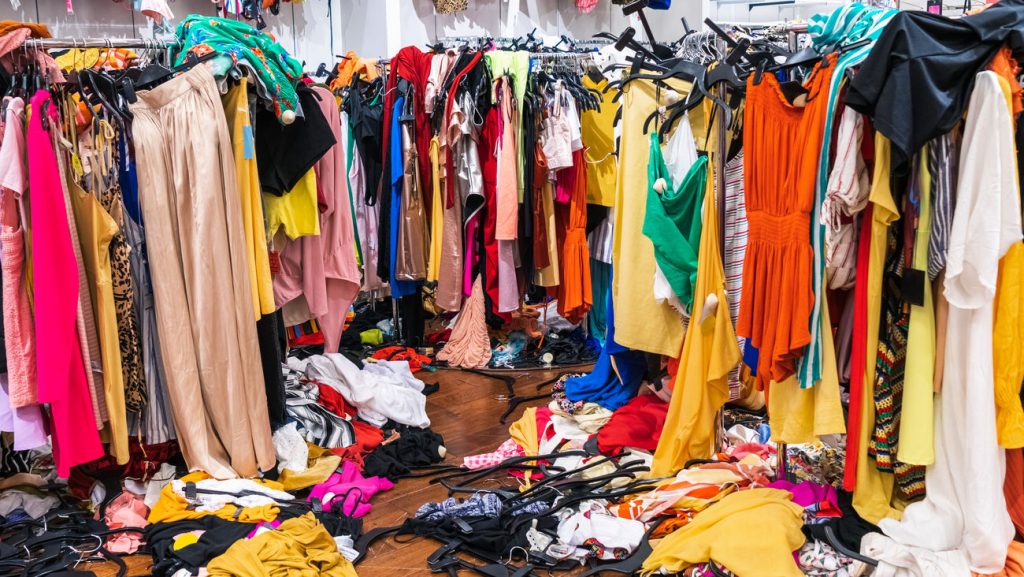
By Heather Gauert ‘24
Many people love shopping, you walk into a store, the bright lights hit you as you suddenly become engulfed by bright colors, and patterns. When you see a cute shirt with a low price, who could resist? What you need to ask yourself is, What is making this shirt cheap? What corners are being cut? Oftentimes consumers do not question this and end up supporting Fast Fashion brands.
Fast Fashion is defined as inexpensive clothing produced rapidly by mass-market retailers in response to the latest trends. Teens are mainly the consumers and don’t understand or are unaware of the negative effects. The fast fashion industry’s pollution and environmental harm due to its promotion of overconsumption and consumerism, and unfair labor conditions have had a detrimental impact around the world.
The Environmental harm produced by the Fast Fashion Industry is excessive and dangerous. Due to polyester production the industry is accountable for about 10% of the world’s carbon emissions according to The World Bank. The EPA claims that in 2015 alone 47 billion metric tons of greenhouse gasses were released into the atmosphere. According to the New York Times, Fabrics like polyester are derived from fossil fuels, these make up 60% of the fabric used. After the wasteful and polluting process of making clothes 85% of them end up in landfills or burned, realizing more dangerous fumes and chemicals into the environment.
Making Fast Fashion clothes is not only dangerous for the environment but the workers making the clothes are excessively underpaid and are working in hazardous conditions. To reduce costs, most textile factories are in countries with little or no labor laws to protect workers. This allows businesses to underpay their workers, as 93% of fast fashion brands don’t pay their workers a living wage. In 2013, about 1140 people died in the collapse of the Dhaka garment factory in Bangladesh. Unfortunately, many factories just like Rena Plaza are still operating and have workers inside.
The Fast Fashion industry cuts costs wherever they can, clothes are cheap, thin, and poorly made. Clothes are produced as fast as possible to keep up with trends, promoting the idea that clothes are disposable. The average American throws away about 81 pounds of clothing each year. Overconsumption of clothing causes extra waste, affecting the environment.
Next time you go shopping, ask yourself: Do I need more clothes? Where should I get clothes? Will I like the clothes in a year? These questions will help you prevent overconsumption, and buying clothes that are trending now, but won’t be popular in a few months. Instead of shopping at stores like Shien, Forever 21, and Zara, try going to your local thrift store. Thrift stores are a great alternative to buying fast fashion clothes because they too are cheap. More alternatives are; trying a clothing swap with friends, shopping at yard sales, and making your own clothes. While trying to help the environment, you can find a new hobby or interest!
The next time you see a cute shirt that is a fourth the price it should be, think twice and choose the more sustainable and morally conscious option.
Sources:

I agree that shopping at a thrift store is a reasonable alternative to shopping at large shops.